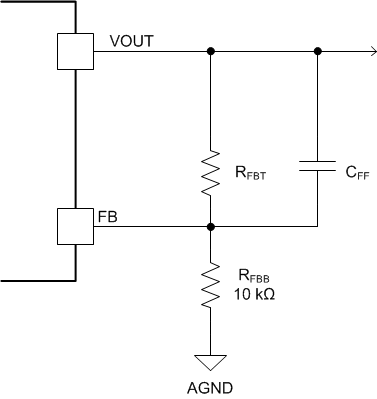SNVSAO6C September 2017 – March 2018 LMZM33603
PRODUCTION DATA.
- 1 Features
- 2 Applications
- 3 Description
- 4 Revision History
- 5 Pin Configuration and Functions
- 6 Specifications
-
7 Detailed Description
- 7.1 Overview
- 7.2 Functional Block Diagram
- 7.3
Feature Description
- 7.3.1 Adjusting the Output Voltage
- 7.3.2 Feed-Forward Capacitor, CFF
- 7.3.3 Output Current vs Output Voltage
- 7.3.4 Voltage Dropout
- 7.3.5 Switching Frequency (RT)
- 7.3.6 Synchronization (SYNC)
- 7.3.7 Input Capacitors
- 7.3.8 Output Capacitors
- 7.3.9 Output On/Off Enable (EN)
- 7.3.10 Programmable Undervoltage Lockout (UVLO)
- 7.3.11 Power Good (PGOOD)
- 7.3.12 Overcurrent Protection (OCP)
- 7.3.13 Thermal Shutdown
- 7.4 Device Functional Modes
- 8 Application and Implementation
- 9 Power Supply Recommendations
- 10Layout
- 11Device and Documentation Support
- 12Mechanical, Packaging, and Orderable Information
Package Options
Mechanical Data (Package|Pins)
- RLR|18
Thermal pad, mechanical data (Package|Pins)
Orderable Information
7.3.1 Adjusting the Output Voltage
A resistor divider connected to the FB pin (pin 16) programs the output voltage of the LMZM33603. The output voltage adjustment range is from 1 V to 18 V. (See Output Current vs Output Voltage for the maximum allowable output voltage as a function of output current.) Figure 18 shows the feedback resistor connections for setting the output voltage. The recommended value of RFBB is 10 kΩ. The value for RFBT can be calculated using Equation 1. Depending on the output voltage, a feed-forward capacitor, CFF, may be required for optimum transient performance. Table 1 lists the standard external RFBT and CFF values for several output voltages between 2.5 V and 18 V. Table 2 lists the values for output voltages below 2.5 V. Additionally, Table 1 and Table 2 include the recommended switching frequency (FSW), the frequency setting resistor (RRT), and the minimum and maximum output capacitance for each of the output voltages listed.
For designs with RFBB other than 10 kΩ, adjust CFF and RFBT such that (CFF × RFBT) is unchanged and adjust RFBT such that (RFBT / RFBB) is unchanged.
space

 Figure 18. Setting the Output Voltage
Figure 18. Setting the Output Voltage Table 1. Required Component Values (VOUT ≥ 2.5 V)
| VOUT (V) | RFBT (kΩ)(3) | CFF (pF) | fSW (kHz) | RRT (kΩ) | COUT(min) (µF)(1) | COUT(max) (µF)(2) |
|---|---|---|---|---|---|---|
| 2.5 | 15.0 | 220 | 250 | 162 | 150 | 400 |
| 3.3 | 23.2 | 150 | 300 | 133 | 88 | 300 |
| 5 | 40.2 | 100 | 450 | 88.7 | 66 | 200 |
| 6 | 49.9 | 68 | 550 | 71.5 | 54 | 160 |
| 7.5 | 64.9 | 47 | 650 | 60.4 | 40 | 130 |
| 9 | 80.6 | 47 | 700 | 56.2 | 36 | 110 |
| 12 | 110 | open | 900 | 44.2 | 22 | 80 |
| 13.5 | 124 | open | 1000 | 39.2 | 22 | 75 |
| 15 | 140 | open | 1100 | 35.7 | 20 | 65 |
| 18 | 169 | open | 1200 | 33.2 | 16 | 55 |
Table 2. Required Component Values (VOUT < 2.5 V)
| VOUT (V) | RFBT (kΩ)(1) | CFF (pF) | FSW (kHz) | RRT (kΩ) | COUT |
|---|---|---|---|---|---|
| 1 to 2.5 | see Equation 1 | open | 250 | 162 | 150-µF ceramic +
470-µF polymer |